Documentary Storyboard Template
A visual plan for your documentary
While documentaries often evolve organically, a documentary storyboard template provides structure, ensuring a strong narrative flow. Using a storyboard helps filmmakers visualize camera angles, refine the story, and streamline pre-production.
This guide will use StudioBinder’s storyboard creator to illustrate each step. This process is universal and applicable whether you’re using sophisticated software or just a pen and paper.
Steps in this guide
1. Choose your storyboard template format
2. Read the scene or treatment
3. Create or gather visual references
Step 1
1. Choose storyboard template format
Storyboard templates vary, offering different numbers of panels per page. If you’re sketching rough ideas, smaller frames work best. For professional pitching, use larger frames with detailed descriptions.
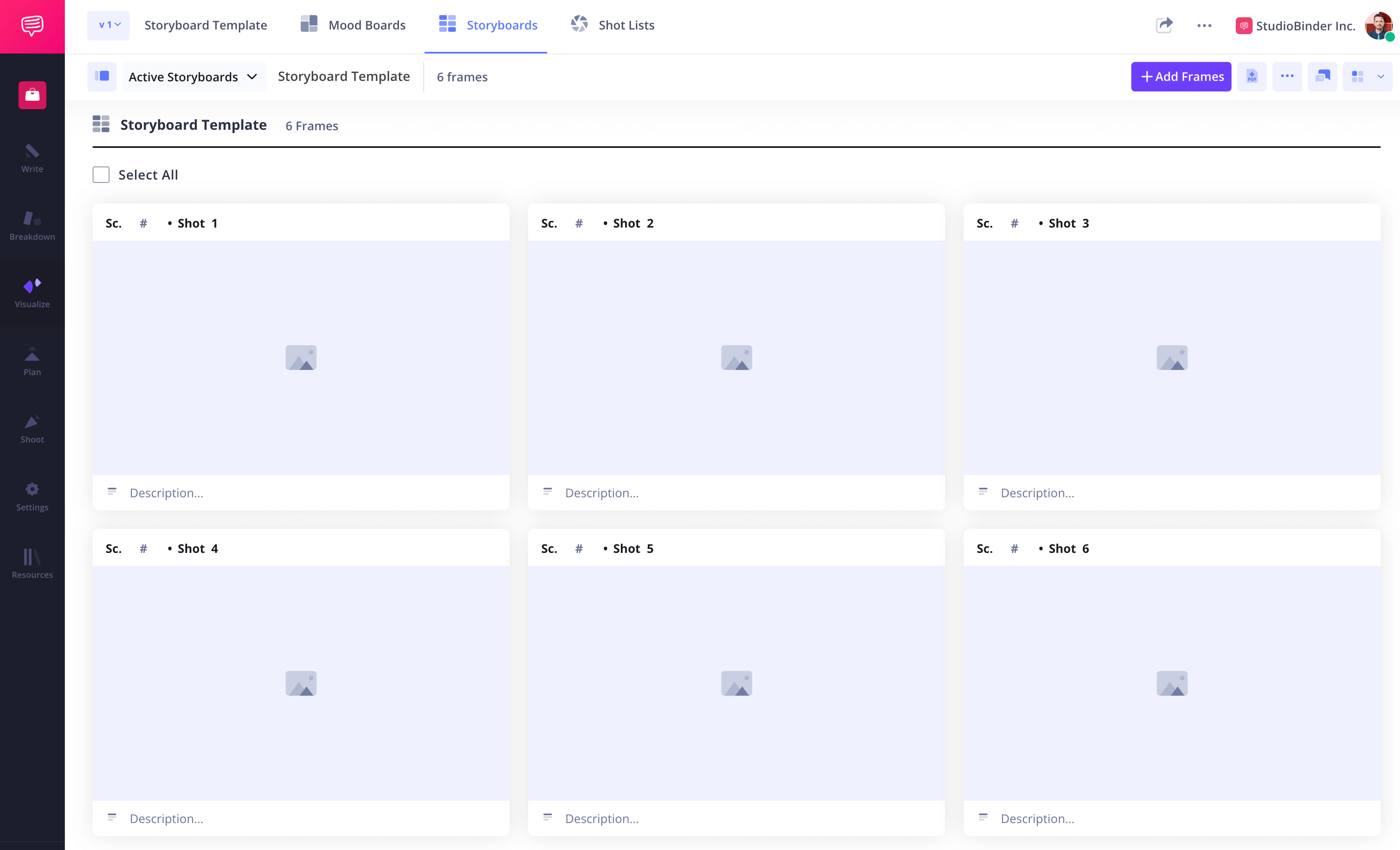
How to do this in StudioBinder
- Switch between view types (from 1 - 4 columns).
- Hide or reveal shot specs (scene number, description, audio, video).
- Automatically fit your image to the aspect ratio.
Step 2
2. Read the script or treatment
Even without a formal script, defining your documentary’s structure in pre-production is essential. Consider: - What themes drive your story? - What emotional tone should each scene convey? - How will camera angles and movements enhance storytelling?
Think about what you want to achieve, the mood of the shoot, and the emotional tone you want to capture. Picture the different shots by visualizing the techniques behind each—like close-ups, wide angles, and camera movements—can tell your story better and make it more enjoyable for the audience.
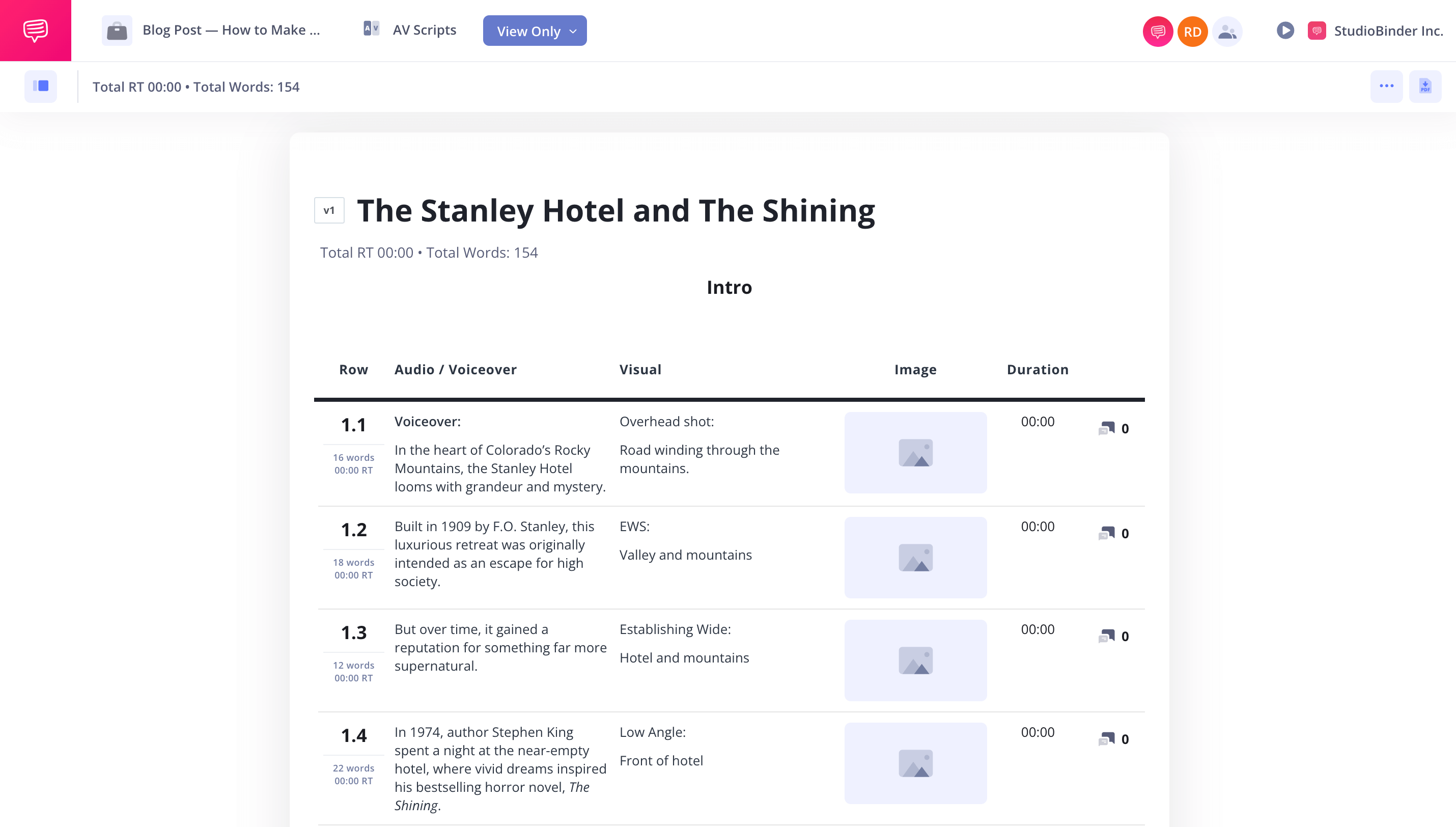

How to do this in StudioBinder
- Import a script or treatment to automatically turn scenes into blank storyboards.
- Tag each line to create a new panel in the storyboard.
Step 3
3. Create or gather visual references
Since documentaries rely on visual storytelling, strong imagery is crucial. You can:
- Draw rough sketches
- Use stock images or reference photos
- Hire an artist for professional storyboards
- Organize images chronologically to reflect your documentary’s progression.
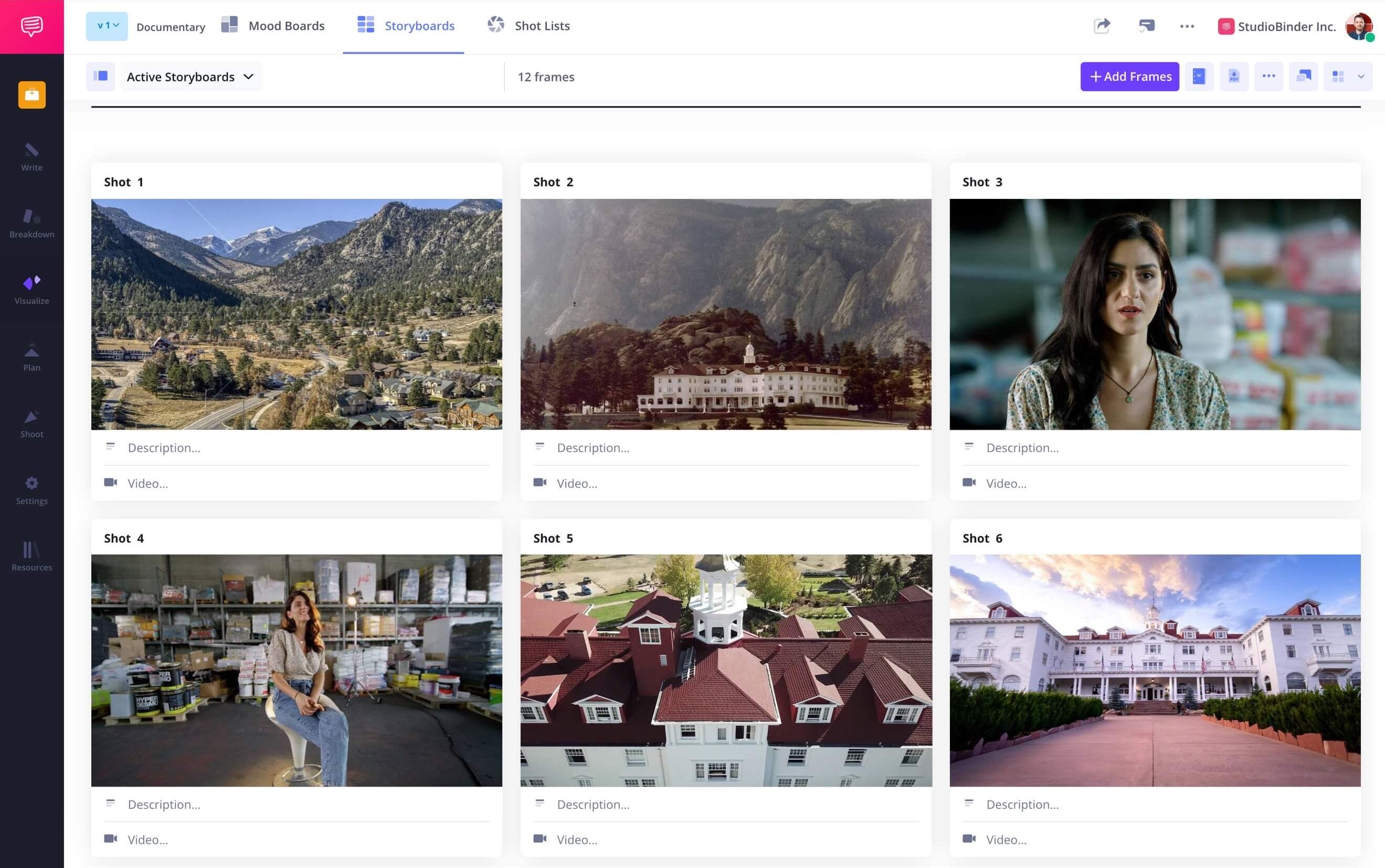

How to do this in StudioBinder
- Upload images anywhere, including previous projects.
- Use your webcam to capture hand-drawn frames.
- Reorder images by simply clicking and dragging frames.
Step 4
4. Add descriptions and annotations
Annotations clarify camera movements, sound effects, and shot composition.
Adding notes about lighting, audio cues, or interview setups enhances communication with your crew. You can add include these details in directly on your storyboard by annotating, using arrows, and text boxes to illustrate specific info.
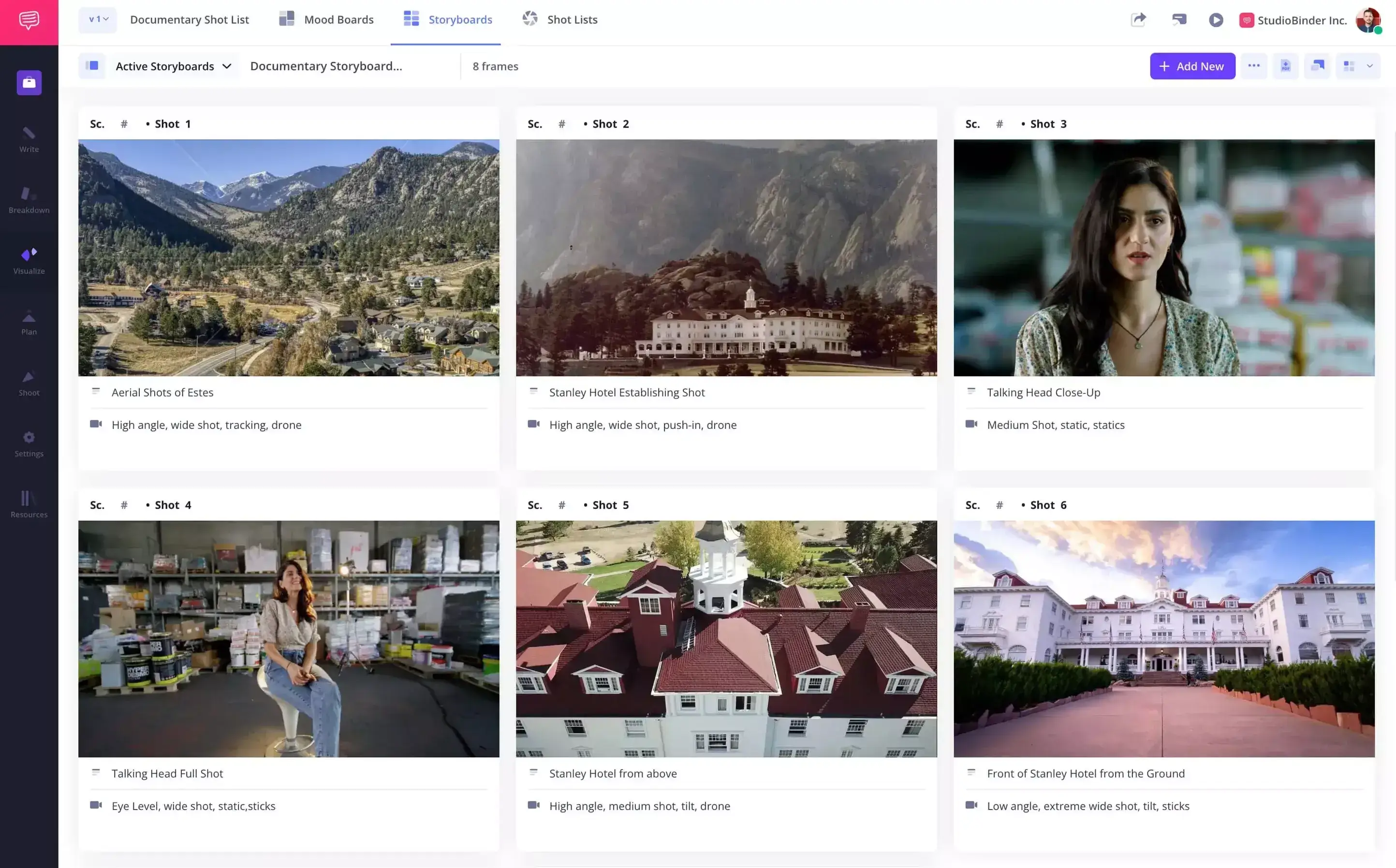

How to do this in StudioBinder
- Add scene descriptions, audio information like dialogue, and video information explaining the visuals like shot types and sizes.
- Create arrows, text and shapes to clarify the direction of each image.
Step 5
5. Collaborate and refine
Filmmaking is a team effort. Sharing your storyboard software file with editors, cinematographers, and producers ensures a cohesive vision. Feedback can enhance visual storytelling before production begins.
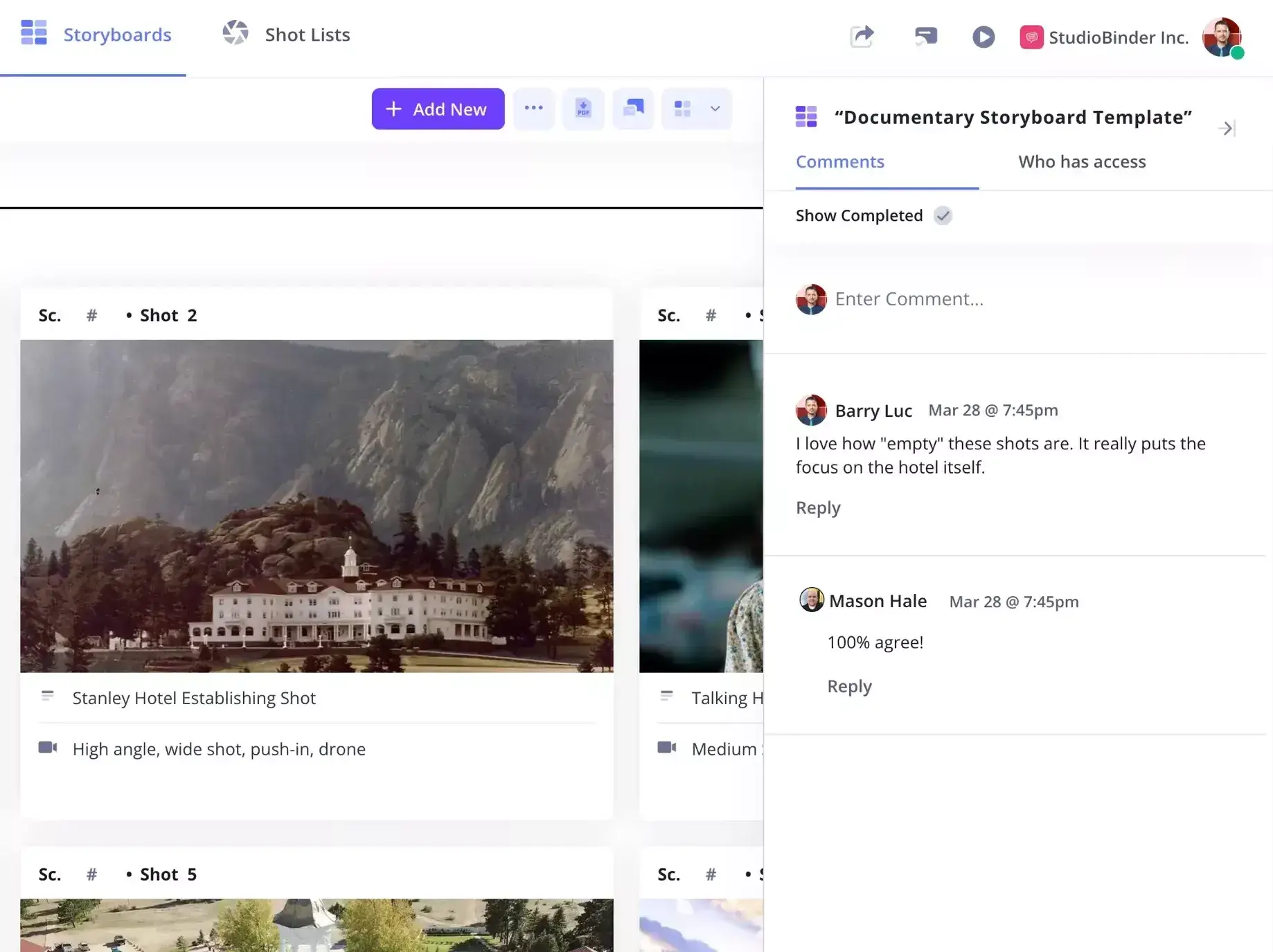

How to do this in StudioBinder
- Share with a view-only link, and invite collaborators to work on this specific feature/page (not the entire project).
- Collaborate with clients and team members with the comment feature.
Step 6
6. Print for on-set reference
A printed documentary storyboard template keeps your team aligned. A tangible copy ensures the production stays on track, even if technology fails.


How to do this in StudioBinder
- Generate storyboard PDFs for a presentation with added security.
Conclusion
Documentary storyboard is complete
Unlike scripted films, documentaries evolve. Treat your documentary storyboard template as a living document that adapts as new stories emerge. Whether you’re crafting a personal story or an investigative piece, a storyboarded documentary strengthens your narrative.
This explainer video storyboard template is one of many storyboard templates you can use. Browse other storyboard templates on our Templates page.
